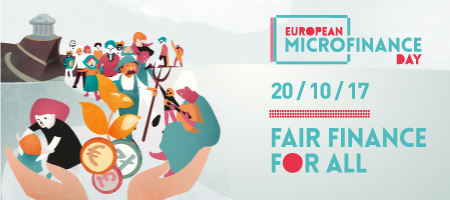
Today, as our friends and colleagues across the continent mark European Microfinance Day, we would like to offer a view from the South. After all, e-MFP occupies a distinct place – we’re a platform for Europe-based microfinance actors who are specifically focused on working in the South as their core objective. Like an astronomer atop a lonely mountaintop, we find ourselves in the heart of Europe, yet our minds are focused on the world beyond.
So what does European microfinance look like when seen from the South? Well, it is a bit like looking at the stars – the light shines bright yet comes from a distant past. Microfinance institutions (MFIs) in Europe look remarkably similar to the global MFIs of the 80s and 90s -- small, local organizations with a deep focus on lending to micro-enterprises while maintaining basic financial sustainability. They're treading the paths laid by MFIs in countries like Bangladesh and Peru.
MFI clients in Europe and in the South share one key thing in common: these are people to whom banks aren’t interested to lend. In the South it usually means that their enterprises are informal, without proper documentation and thus no paper trail. In Europe it often means they are too new to have built up a history and the same paper trail banks like to see. In both cases, they rarely have collateral they can provide. Above all, microenteprises everywhere are often simply too small to bother – the combination of time required to understand the business and its operations juxtaposed with the (relatively) small amount of funds they need is a formula that just doesn’t fit within the traditional banking model.
That leaves room for a specialist lender that can spend the time with the borrower, understand her business needs, and perhaps offer some business training or other non-financial services. In short, a microfinance lender.
But there are also large differences. The places where MFIs operate in the South are not just dealing with a lack of credit. Poor families, often in rural areas, have little access to any financial services – current accounts, savings or insurance, the ability to make payments or send money without using cash. That is the reason why MFIs in the South have over the years broadened their focus, providing opportunities not just to borrow, but also to save, buy insurance, send money to their family in the village. The evolution of social missions and terminology, from microcredit to microfinance to financial inclusion, has mirrored a sector’s increased understanding of poor clients and their financial needs.
Meanwhile in Europe, MFIs have little need to broaden to such services. Most of their clients already have a bank account. Nearly all use card payment services to process client payments. Their need for the type of insurance that’s so critical in the South is much reduced – basic health care is nearly always assured one way or another, regardless of personal means. Children’s education isn’t dependent on personal savings or loans.
That leaves the European MFIs to focus on the one critical thing their clients need that others cannot or will not provide them – credit.
So it is both peculiar and also completely proper that while the MFIs in the South that created and perfected microcredit have been shifting and broadening their services in all sorts of ways, European MFIs are firmly rooting themselves in the core lending practices perfected decades ago. The two share a name and a common origin, but their paths are diverging. And as they do, both South and North will continue to share and exchange experiences and get better at their missions.
We look forward to watching and supporting these developments as they unfold.


Leave a comment